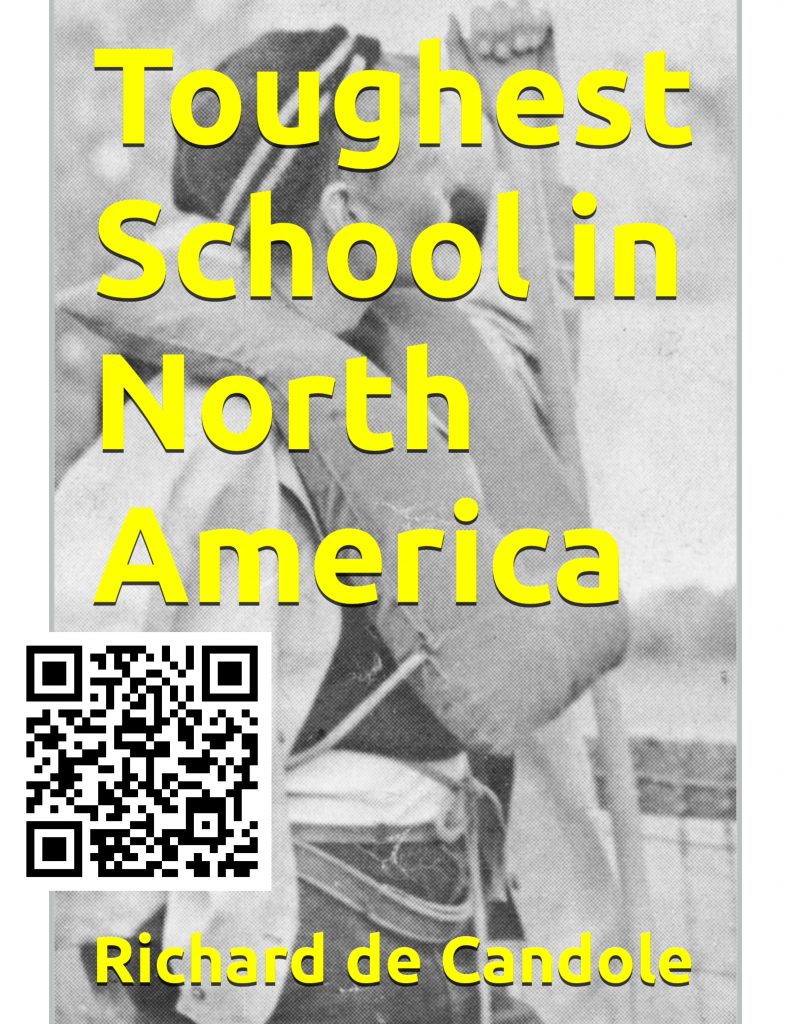We had been in the United States a full five years, which meant my father could renounce his Canadian citizenship and become a US Citizen and join the US Customs Service, which he did. He had worked 9 years for Canadian Immigration in Montreal and ended up working another 20 years for the US. By the time he was done, he was a walking NAFTA encyclopedia. Maybe this day at the ballpark was a celebration.
We and just over 9,000 of our fellow Orange County citizens graced Anaheim Stadium that day in the beginning – less than 3,000 were likely left by the end of this twin bill between two losing teams. We sat in the General Admission section in the upper deck, well behind the left field line. I’ve worked with Steve Jobs and lived to write about it, met Cesar Chavez, and asked Kurt Vonnegut about German batball. All those things pale compared to seeing Hoyt Wilhelm and Jim Bouton pitch on the same day in late June 1969.
The Pilots were an ephemeral team, birthed into being well before Microsoft, Nirvana, Amazon, Starbucks, and the Mariners. Living like a mayfly on a Nebraska back road, the Pilots lasted one season in Seattle before morphing into the Milwaukee Brewers.
Being an eleven-year-old immigrant with a green card was complex. I learned English at six when we first came to the city of Orange located in (wait for it) Orange County, California. Orange sat in the shadow of the Matterhorn at Disneyland, Knott’s Berry Farm, and Anaheim Stadium.
At eleven, no one understood me except baseball. Baseball and my studies at Holy Family Catholic School on the corner of Glassell and La Veta was my tether to America. You didn’t have to look good to play baseball. You could be short. Stout. Like a teapot. Like me.
You could look like Yogi Berra as long as you could make contact and field. My baseball proficiency was almost on the same level as my language proficiency.
I learned how to field and make contact as I picked up English. Baseball’s world continually melded with mine. Bill Singer, a pitcher for the Dodgers was diagnosed with Hepatitis B and turned yellow. My mom turned yellow just like Bill Singer at around the same time.
A nurse, she had started an IV on a girl who was later diagnosed with Hepatitis B. She did this right before a two-week vacation. The hospital never bothered to reach out to her. It sounds trite to say she turned yellow, but she did as her liver failed. Her skin, her face, even the whites of her eyes turned yellow. It was unbelievable, but having heard Vin Scully delve into Bill Singer’s symptoms, I was prepared. Better living through baseball, I guess.
I played. I went to Angel games at what was then known as Anaheim Stadium. I hustled visiting players for autographs as they boarded their bus. (Got Vida Blue’s in his rookie season, sadly long lost somewhere in the shuffle of life.) Everything in life seemed possible. Even probable.
Baseball formed my code. I “collected” baseball cards through the various means available to a young child of my economic strata.
Baseball is a game of numbers, of probabilities, some more random than others. I was part of the Bill James movement before Bill James became Bill James. Moneyball, after Ball Four, is the second most important book written about baseball, and I later looked at its rise fondly. I lived in a world of batting averages and ERAs.
Orange County 1969 was the year after 1968, and 1968 was momentous. The country lost MLK in April and RFK in June. I remember my father coming home after his night shift, very deeply affected that RFK was shot at the Ambassador Hotel. It hit the whole family. We were good Catholics and being Catholic in the ‘60’s meant being with the Kennedy clan. We identified with the Kennedys, at least the Catholic immigrant thing.
The state of baseball in 1969 was chaos. The sport was changing and Jim Bouton’s Ball Four documents and captures the vibe about what was going on.
It was the first year of divisional play, ever. Teams in the American and National Leagues never faced each other unless they met in spring training or the World Series.
There was no Designated Hitter (DH) yet. If a pitcher threw at a batter, he knew retribution was coming at his head during his next at bat against the team. Even if it was months or years later, baseball retribution was a guarantee. There was no interleague play, no unholy home stands against teams in another league. It was as real as baseball could be. So we thought. Then came Ball Four.
The Seattle Pilots were a fresh expansion team who only existed for one year before moving to Milwaukee and becoming the Brewers.
The California Angels were in dead last. It was the end of Bill Rigney’s reign when Lefty Phillips became manager in May. A lifetime utility infielder who batted .256, he parlayed a mediocre playing career into longtime management gigs in the Show. Rigney had been with the Angels since their start at Wrigley Field (in Los Angeles) in 1961. He had been the Angel’s first and only manager.
But this doubleheader was really about three knuckleballers – Jim Bouton, Eddie Fisher, and Hoyt Wilhelm.
From the wealth of knowledge, Wikipedia:
“A knuckleball or knuckler is a baseball pitch thrown to minimize the spin of the ball in flight, causing an erratic, unpredictable motion. The airflow over a seam of the ball causes the ball to transition from laminar to turbulent flow. This transition adds a deflecting force on the side of the baseball. This makes the pitch difficult for batters to hit, but also difficult for pitchers to control and catchers to catch; umpires are challenged as well, as the ball’s irregular motion through the air makes it harder to call balls and strikes. A pitcher who throws knuckleballs is known as a knuckleballer.”
Wikipedia
Jim Bouton started throwing the knuckleball after he blew out his young arm after some stellar seasons pitching for the New York Yankees in the early 1960s. This was before the eponymous Tommy John surgery, which had yet to be invented. Tommy John was still pitching on his first great arm at the time for the Chicago White Sox. Bouton, who recently passed away, wrote Ball Four. It was a scandalous book that you kept hidden from your parents. It is still a timeless read – worth reading more than once.
Bouton took all of us into the Major League Baseball, the Show – we got to see the Hindenburg humanity of it. The Seattle Pilots locker room, where ever it was located, day or night, was a Real World set before MTV – a temporary waypoint for an entire organization. It was reality writing. He took us into the clubhouse to talk about the minutiae summing up a world hidden from the rest of us.
Ball Four is written as a diary, so it’s very easy to see what Jim Bouton thought and wrote about on June 27, 1969.
There was a growing tension in the locker room over the role of the union in baseball. Many of the things Bouton wrote about that day (and others) dealt specifically with the exploitation of players by the ball clubs. The Club controlled everything.
On the 27th, he writes about an incident when he was a New York Yankee. He was brought in to speak to a group from IBM. Bouton was paid $300, but he found out from his brother that the Yankees were paid $500.
He also talks about Marvin Miller, and how he was able to get the regular Major League ballplayers $250 per year for the use of their likeness instead of $125. As the leader of the MLBPA (Major League Baseball Players Association), Miller was instrumental in revolutionizing how baseball players were paid, traded, and given a choice in their futures.
Free agency was not a baseball term in 1969. Ball Four helped free agency happen. This was before the Curt Flood lawsuit, which helped form modern free agency, allowing players to have more say in their futures and where they played. Marvin Miller was knee-deep in the Curt Flood lawsuit.
Mr. Flood was an outstanding center fielder for the Saint Louis Cardinals who refused to report to Philadelphia after being traded to the Phillies, citing a bad team, bad ballpark, and racist fans. Though Flood lost his lawsuit, it paved the way for further challenges to baseball clubs’ stranglehold on players’ lives.
Ball Four’s message was clear – it may look great, but this life isn’t always the everything – we are not cattle – we are being abused by the system. Every free agent owes Curt Flood (and Jim Bouton) for starting to chip away at the wall.
The other two knuckleballers I saw pitch that day were Hoyt Wilhelm and Eddie Fisher.
Eddie was a knuckleball pitcher who had great success in the early Sixties. He was the ultimate journeyman pitcher with a rubber arm who could start or do middle relief and setup. Hoyt closed. That’s why the Angels carried both Eddie Fisher and Hoyt Wilhelm.
Wilhelm, a Hall of Famer, was the first true knuckleballer. This allowed him to pitch until he was 89. Likely would still be pitching if not dead. For real – the last game he pitched was sixteen days before his fiftieth birthday. He was the first pitcher to pitch in over 1,000 games, and he did it getting to the Majors at 30 years old.
So on that day, I saw all three pitch and a few pages of a book written, I think.
This post could turn into a baseball Ulysses, a full description of every pitch and hit, of every batter and pitcher, passed ball, and stolen base. Every thread I pulled yields another story and tie to the social fabric of baseball and my life.
Much later in life, I called into KPBS and spoke with Kurt Vonnegut, and all I could think about was asking him about German batball. What does it mean?
“It’s just German batball.”
Kurt Vonnegut, Jr.
Today, no one plays day doubleheaders on Fridays as they did in 1969. Usually reserved to make up rainout days, they are avoided at all costs. Doubleheaders take a toll on players – especially catchers. There’s always been something medieval about a catcher catching both ends of a doubleheader. Especially if you have to catch a knuckleballer.



Great tale. I love Vonnegut but something about knuckleballers attracts me more. My uncle, BTW, fell in Vietnam in that fateful 1968. I got his name, which means I’m also on the monument.